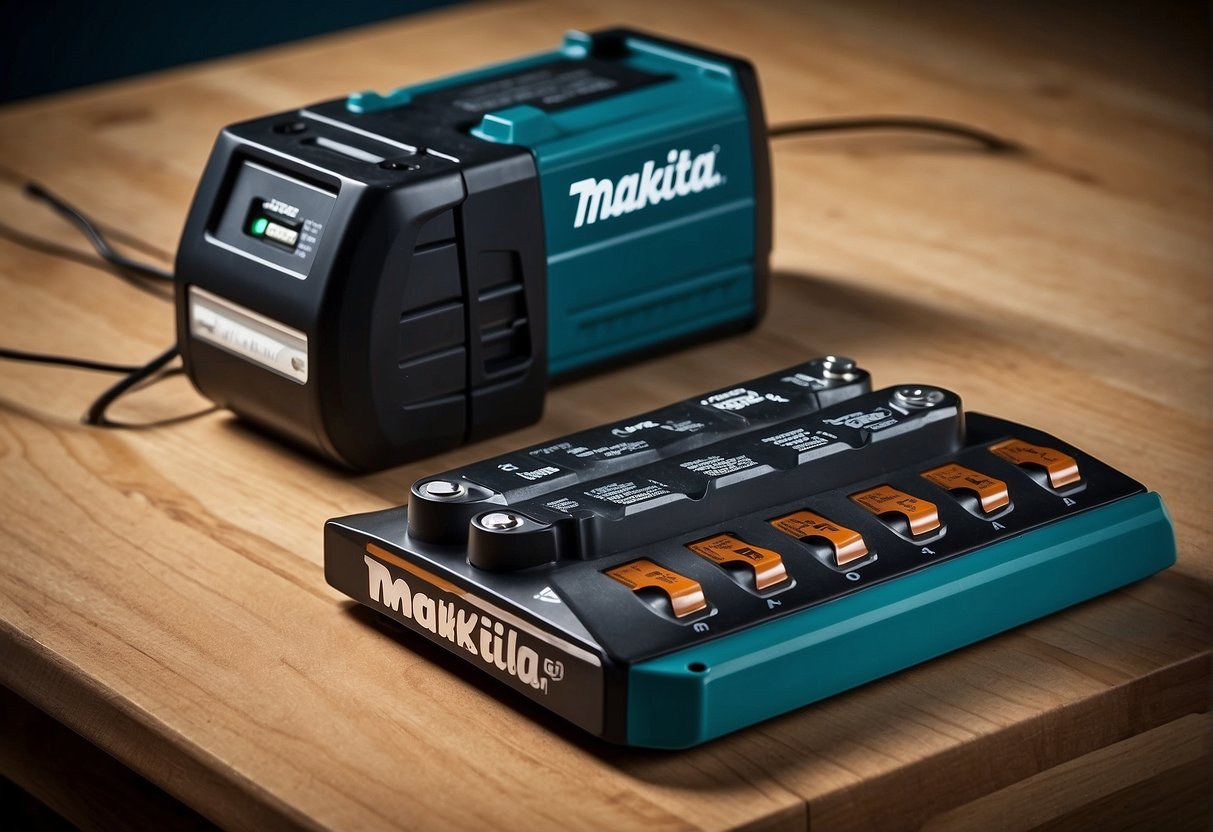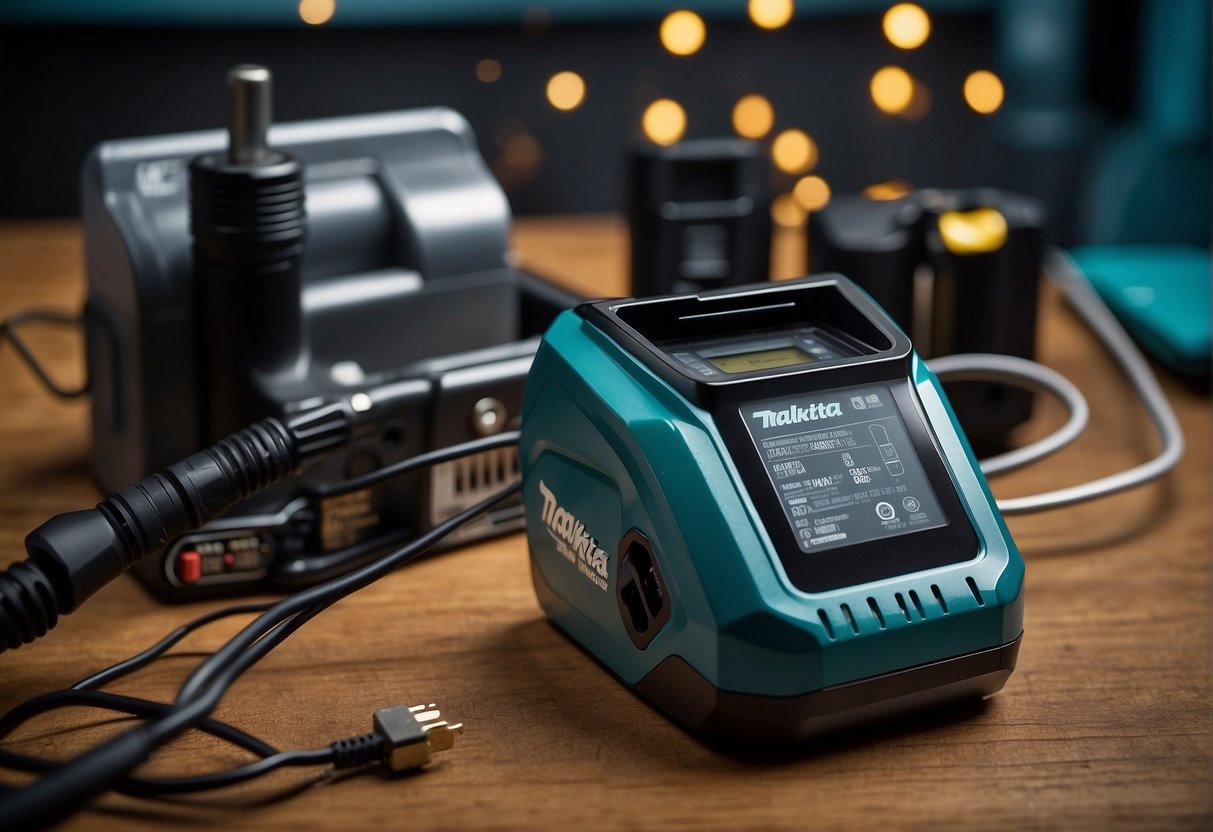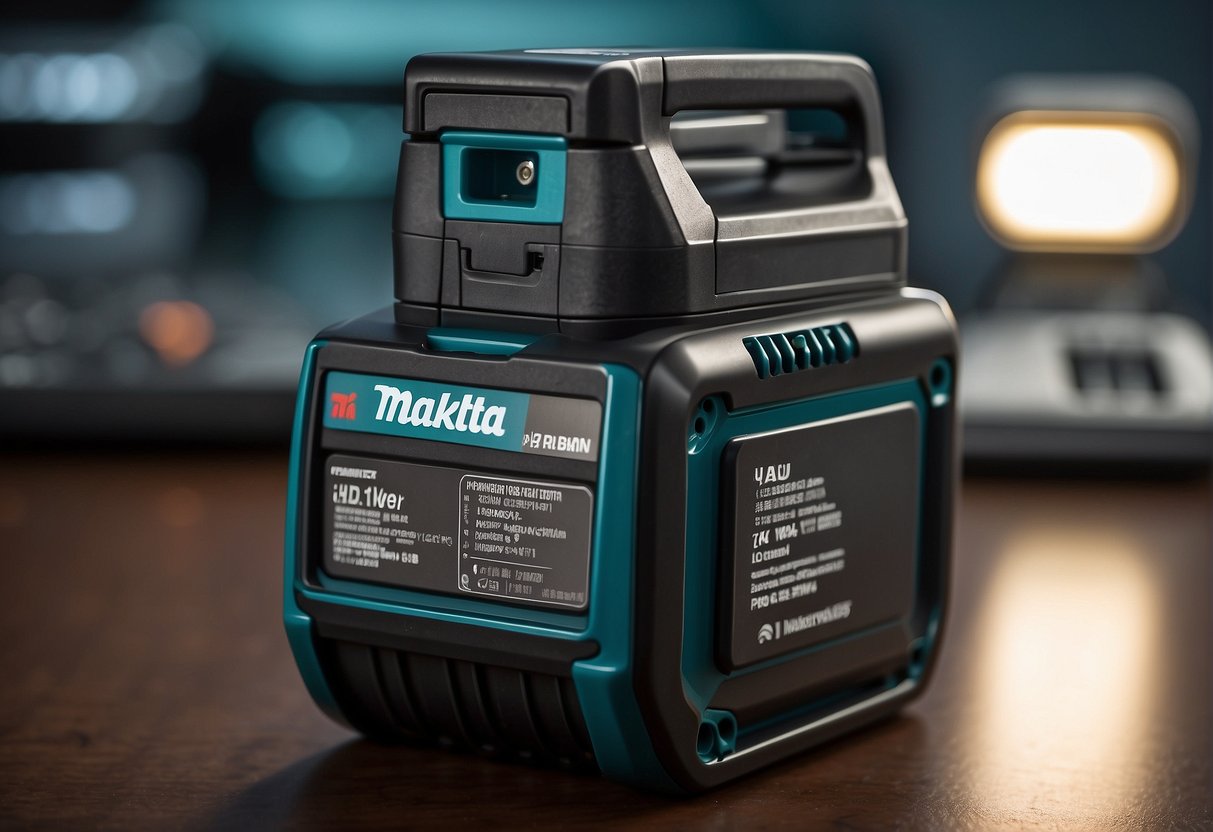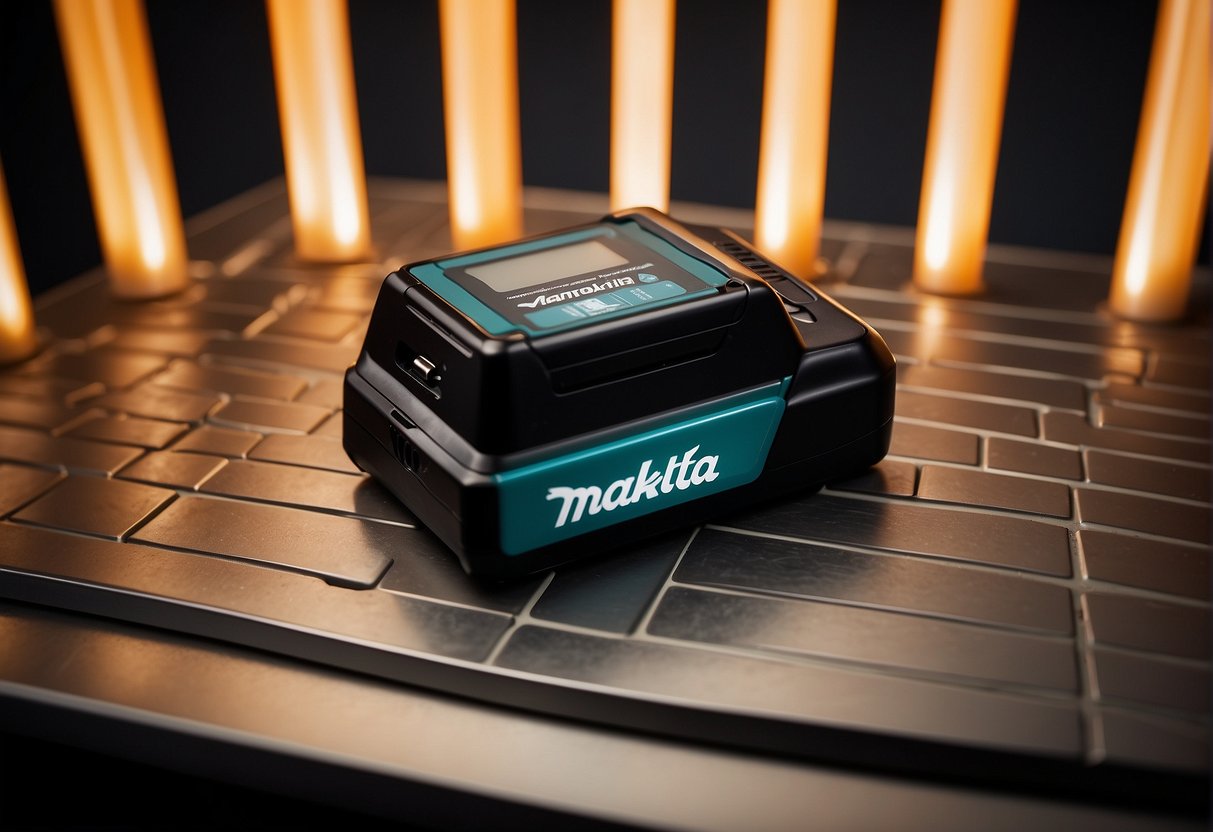I have been using Makita power tools for years and I know how important it is to have a fully charged battery before starting a job. One of the most common questions I get asked is, “How long does it take for a Makita battery to charge?” The answer to this question depends on several factors, including the type of battery, the charger, and the charging conditions.
Understanding Makita Battery Technology is essential to know how long it takes to charge a Makita battery. Makita offers a range of battery technologies, including Lithium-ion, Ni-MH, and Ni-Cd. Lithium-ion batteries are the most popular type of battery and are known for their long-lasting power and fast charging times. Ni-MH and Ni-Cd batteries are less common but still widely used in some Makita power tools.
Charging Makita Batteries is a straightforward process, but it is essential to follow the manufacturer’s instructions carefully. Makita offers several different types of chargers, including standard chargers, rapid chargers, and dual-port chargers. Standard chargers typically take around 30-60 minutes to charge a battery fully, while rapid chargers can charge a battery in as little as 15 minutes. However, rapid charging can reduce the overall lifespan of the battery, so it is important to use it sparingly.
Key Takeaways
- Makita offers a range of battery technologies, including Lithium-ion, Ni-MH, and Ni-Cd.
- Standard chargers typically take around 30-60 minutes to charge a battery fully, while rapid chargers can charge a battery in as little as 15 minutes.
- It is important to follow the manufacturer’s instructions carefully when charging Makita batteries to ensure their longevity.
Understanding Makita Battery Technology
As a professional, I rely heavily on my power tools to get the job done. One of the most critical components of any cordless tool is the battery. Makita is a brand that I trust, and their batteries are known for their reliability and durability. In this section, I will explain the technology behind Makita batteries and how they work.
Lithium-Ion Batteries and Capacity
Makita uses lithium-ion batteries in their cordless tools. These batteries are known for their high energy density, which means they can store a lot of energy in a small package. Lithium-ion batteries are also lightweight and have a low self-discharge rate, which means they can hold their charge for a long time when not in use.
The capacity of a battery is measured in ampere-hours (Ah). The higher the Ah rating, the longer the battery will last. Makita offers a range of battery capacities, from 1.5Ah to 6.0Ah, so you can choose the right battery for your needs. A higher capacity battery will last longer, but it will also be heavier and more expensive.
Makita Battery Series: LXT and CXT
Makita offers two different battery series: LXT and CXT. The LXT series is Makita’s flagship line of cordless tools, and it uses 18V batteries. The CXT series is a compact line of cordless tools, and it uses 12V batteries. Both series use lithium-ion batteries, but the LXT series offers a wider range of tools and battery capacities.
Makita’s LXT batteries are compatible with all of their 18V tools, so you can use the same battery for multiple tools. The LXT batteries also have a built-in LED charge level indicator, so you can easily see how much charge is left in the battery.
The CXT batteries are smaller and lighter than the LXT batteries, which makes them ideal for use in compact tools. The CXT batteries also have a built-in LED charge level indicator.
In conclusion, Makita batteries are designed to provide reliable and long-lasting power for your cordless tools. By understanding the technology behind these batteries, you can choose the right battery for your needs and ensure that your tools are always ready to go when you are.
Charging Makita Batteries
When it comes to charging Makita batteries, there are several factors to consider, including the type of charger, charging time, and optimizing battery life. Here’s what you need to know:
Makita Charger Types
Makita offers a variety of charger types, including the DC18RC and DC18SD. The DC18RC is a fast charger that can charge batteries in as little as 22 minutes, while the DC18SD is a standard charger that takes longer to charge batteries. Makita also offers the Rapid Optimum Charger, which is a smart charging system that optimizes battery life and charging efficiency.
Charging Time Factors
The charging time for Makita batteries varies depending on the type of battery, the state of charge, and the type of charger. For example, a 5.0Ah battery can take up to 45 minutes to charge with a standard charger, while the same battery can be charged in as little as 45 minutes with a Rapid Optimum Charger. It’s important to note that charging times can vary depending on the conditions, so it’s a good idea to refer to the manufacturer’s guidelines for specific charging times.
Optimizing Battery Life
To optimize battery life, it’s important to use the right charger for the battery, charge the battery in the right conditions, and avoid overcharging or undercharging the battery. Makita’s Rapid Optimum Charger is designed to optimize battery life by communicating with the battery’s built-in chip to control the charging process. It’s also important to store batteries in a cool, dry place and to avoid exposing them to extreme temperatures.
Overall, Makita’s charging system is designed to be efficient and to maximize battery longevity. By following the manufacturer’s guidelines for charging and storing batteries, you can ensure that your Makita batteries last as long as possible.
Makita Battery Specifications
As a professional contractor, I rely on Makita batteries to power my tools on a daily basis. One of the most important factors that I consider when choosing a battery is how long it takes to charge. In this section, I will provide an overview of Makita battery specifications, including voltage and compatibility, battery sizes, and run time.
Voltage and Compatibility
Makita offers a range of batteries that are compatible with their tools. The most common voltage for Makita batteries is 18V, which is suitable for most power tools. Makita also offers batteries with lower voltages, such as 14.4V and 12V, for smaller tools and applications.
It’s important to note that not all Makita batteries are compatible with all Makita tools. Before purchasing a battery, be sure to check the compatibility with your tool.
Battery Sizes and Run Time
Makita offers a range of battery sizes, including 2.0Ah, 3.0Ah, 4.0Ah, 5.0Ah, and 6.0Ah. The larger the Ah rating, the longer the battery will last between charges. For example, the Makita 6.0Ah battery provides up to 65% more run time per charge compared to the 3.0Ah battery [1]. The Makita 4.0 Ah battery combines more run time (35% more run time per charge than the Makita BL1830 battery) with a category-leading charge time of only 40 minutes [2].
Makita batteries also feature an integrated L.E.D. battery charge level indicator that allows the user to monitor the battery charge. Makita batteries reach full charge in 45 minutes or less [1].
In conclusion, Makita offers a range of batteries with different voltages, sizes, and run times to suit different applications. When choosing a battery, be sure to check the compatibility with your tool and consider the run time required for your application.
References:
[1] Makita USA – Product Details -BL1850B
[2] Makita USA – Product Details -BL1840B
Safety and Maintenance
As with any power tool, safety and maintenance are important aspects to consider when using Makita batteries. Here are a few tips to ensure optimal performance and longevity of your Makita battery.
Preventing Overheating and Over-discharging
Overheating and over-discharging can damage your Makita battery and reduce its lifespan. To prevent overheating, avoid exposing the battery to extreme temperatures, such as direct sunlight or freezing temperatures. Additionally, avoid charging the battery immediately after use, as this can also cause overheating.
To prevent over-discharging, avoid using the battery until it is completely drained. Instead, recharge the battery when it reaches 30% to 50% capacity. This will help prolong the life of the battery and ensure optimal performance.
Makita’s Protection Technology
Makita batteries come equipped with protection technology to prevent overheating, over-discharging, and other potential issues. This technology includes an anti-vibration feature and a super joint system, which helps reduce the risk of damage from vibrations and impacts.
Additionally, Makita batteries are designed to communicate with the tool they are being used with, ensuring optimal performance and preventing damage to the battery or tool. This communication technology helps ensure that the battery is being used in the most efficient manner possible, prolonging its lifespan and ensuring optimal performance.
In conclusion, by following these tips for safety and maintenance, you can ensure that your Makita battery lasts as long as possible and performs at its best. By preventing overheating and over-discharging and taking advantage of Makita’s protection technology, you can enjoy optimal performance from your Makita battery for years to come.
Comparing Makita with Other Brands
When considering how long it takes for Makita batteries to charge, it’s important to compare them with other brands on the market. In this section, I will compare Makita with two other popular brands: Milwaukee and Ryobi.
Makita vs. Milwaukee
Milwaukee batteries are known for their fast charging times. Their M18 REDLITHIUM batteries can charge in as little as 30 minutes, while their M12 batteries can charge in just 45 minutes. However, it’s important to note that Milwaukee batteries are not interchangeable with Makita batteries.
On the other hand, Makita batteries take longer to charge, with most models taking around 40-60 minutes to fully charge. However, Makita batteries are known for their long-lasting power and durability, often outlasting many other brands on the market. Additionally, Makita offers a 3-year limited warranty on their batteries, giving customers peace of mind.
Makita vs. Ryobi
Ryobi batteries are generally less expensive than Makita batteries, but they also have a shorter lifespan and take longer to charge. Most Ryobi batteries take around 90 minutes to fully charge, compared to Makita’s 40-60 minute charging time.
Like Milwaukee, Ryobi batteries are not interchangeable with Makita batteries. However, Ryobi does offer a 3-year limited warranty on their batteries, which is the same as Makita’s warranty.
Overall, while Makita batteries may take longer to charge than some other brands on the market, they are known for their long-lasting power and durability. Additionally, Makita offers a solid warranty on their batteries, giving customers peace of mind.
Frequently Asked Questions
What is the typical charging time for an 18V Makita battery using the DC18RC charger?
The charging time for an 18V Makita battery using the DC18RC charger varies depending on the battery’s amp-hour rating. A 3.0Ah battery takes approximately 22 minutes to charge, while a 5.0Ah battery takes around 45 minutes. It is important to note that charging times may vary depending on the battery’s condition and age.
Can you leave a Makita battery on the charger overnight without damaging it?
Yes, you can leave a Makita battery on the charger overnight without damaging it. Makita batteries are equipped with over-discharge protection, which prevents the battery from being overcharged and damaged. However, it is recommended to remove the battery from the charger once it is fully charged to prolong its lifespan.
What do the indicator lights on the Makita battery charger signify?
The indicator lights on the Makita battery charger signify the charging status of the battery. When the battery is inserted into the charger, the green light will flash, indicating that the charger is detecting the battery. Once the battery is fully charged, the green light will stop flashing and remain solid. If the red light is flashing, it means that the battery is not charging correctly and may need to be replaced.
How long can I expect a fully charged Makita battery to last during use?
The amount of time a fully charged Makita battery lasts during use depends on the tool and the battery’s amp-hour rating. Generally, a 3.0Ah battery can last up to 30 minutes of continuous use, while a 5.0Ah battery can last up to 50 minutes. However, this may vary depending on the tool’s power consumption and the battery’s age and condition.
Is there a specific charging procedure for new Makita batteries?
There is no specific charging procedure for new Makita batteries. However, it is recommended to fully charge the battery before using it to ensure maximum performance and lifespan. Additionally, it is important to use the correct charger for the battery to avoid damaging it.
What are the charging times for different amp-hour ratings of Makita 12V batteries?
The charging times for different amp-hour ratings of Makita 12V batteries vary depending on the charger used. For example, the Makita DC10WA charger takes approximately 50 minutes to charge a 1.3Ah battery, while the Makita DC10SB charger takes around 70 minutes to charge the same battery. It is important to consult the charger’s manual for specific charging times for different battery amp-hour ratings.

Hi, I’m Sal Muller of Tooltrip.com. My DIY experience led me to understand essential power tools for home projects. Tooltrip.com guides enthusiasts and professionals in choosing right tools for any job. I provide concise top tool reviews for easier, efficient DIY.







